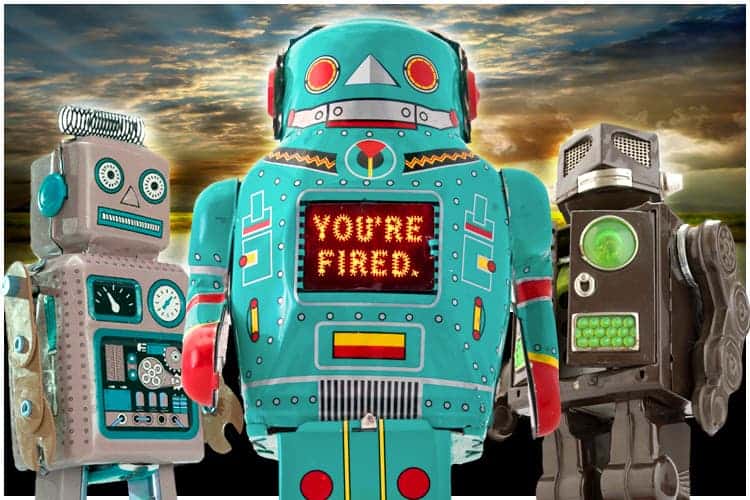The automation of a system or process by use of robotic devices is not a new thing. We see it already in factories and processing plants throughout the world. But in recent years, more and more jobs are being taken over by robots. Now, a new report created by Dr Carl Benedikt Frey and Associate Professor Michael Osborne from the University of Oxford assesses the probability of jobs being taken over by robots in the next 20 years.

The report highlights the key challenges, explores some of the new technology brought on by the digital age and sets out an agenda for change, arguing that this will be a key to avoid stagnation and continue to develop as a society.
“In this paper, we address the question: how susceptible are jobs to computerisation?” they write. To assess this, we begin by implementing a novel methodology to estimate the probability of computerisation for 702 detailed occupations, using a Gaussian process classifier. Based on these estimates, we examine expected impacts of future computerisation on US labour market outcomes, with the primary objective of analysing the number of jobs at risk and the relationship between an occupation’s probability of computerisation, wages and educational attainment. According to our estimates, about 47 percent of total US employment is at risk. We further provide evidence that wages and educational attainment exhibit a strong negative relationship with an occupation’s probability of computerisation.”
Some professions, of course, are more at risk than others. For example, occupational and recreational therapists have almost a 0 percent chance of being replaced, as do teachers, engineers and archaeologists. But clerks and tellers are among the likeliest to lose their jobs. Up to 87% of jobs in Accommodation & Food Services are at risk of automation, and even in some relatively skilled industries, such as Finance and Insurance, up to 54% of jobs could be displaced over the next decade or two. According to the authors, there is a key trend here. Carl Frey, Co-Director of the Oxford Martin Programme on Technology and Employment, explains:
“So far the digital age has not created very many new jobs. According to our estimates only 0.5% of the US workforce is employed in industries that did not exist at the turn of the century. Digital companies need very little capital to get started and not much labour to grow their financial value. For example, WhatsApp had just 55 employees when it was acquired for $19bn. While new technologies create new occupations, they are higher skilled jobs and are not created at scale.”

It may seem hard to believe that this might happen in merely 20 years, but change is already happening, and the pace is accelerating. Michael Osborne highlights this speed:
“The successes of autonomous driving, speech recognition and machine translation have, in the space of little more than a decade, disproved long-held ideas about the distinction between human and machine. Many of these advances, that enable better data and networking, are improving our ability to innovate. This is likely to lead to further acceleration in the rate of technological change.”
[Also Read: Beer delivering robots and Robot bartender]
Here are some of the jobs, and their probability of being taken over by robots, according to the report. I will focus on the extremes:
- Less than 2%: Physicians, surgeons, teachers, therapists, curators, anthropologists, archaeologists, pharmacists, engineers, material scientists, soil and plant scientists, biologists, chief executives.
- Between 2% and 5%: Orthodontists, photographers, health and safety engineers, lawyers, craft artists, veterinarians, writers and authors, astronomers, architects, mathematicians, editors, political scientists.
- Between 5% and 20%: Travel guides, financial managers, graphic designers, police patrols, travel agents, physicists, chefs, urban planners, firefighters.
- Over 98%: telemarketers (actually the biggest chance at 99%), hand sewers, abstract searchers, watch repairers, new account clerks, tax preparers, order clerks, loan officers, legal secretaries, radio operators, tellers, procurement clerks, referees, bookkeeping and auditing clerks.
- Between 95% and 98%: Hotel and restaurant hostesses, cashiers, real estate brokers, polishing workers, dental technicians, pesticide sprayers, telephone operators, cooks (not chefs), rock splitters, gaming dealers, mapping technicians, bill and account collectors.
- Between 80% and 95%: Cement masons, budget analysts, tax examiners and collectors, butchers and meat cutters, retail salespersons, geological and petroleum technicians, traffic technicians, roofers, gaming and sports book runners, riggers, furnace operators, parking lot attendants, floor sanders, correspondence clerks, power plant operators, marine oilers, brickmasons, medical secretaries.
You can read the entire list in the report starting at page 57.
Are you seeing the trends? Jobs where humans have an advantage over robots, where human input is required, where creativity is a factor are the safest. Jobs where you actually do something, where the way you do your job matters most. Repetitive jobs which just involve checking numbers and figures or doing repeated motions are the most threatened. Social interactions are also still highly-desired, and robots won’t fill that niche anytime soon.
This doesn’t mean that in the next 20 years, robots will definitely take over all these jobs. It’s just an indication of what jobs will eventually be threatened to be automated. The value of this study is that it highlights the jobs which actually don’t add any value – and that’s definitely something to think about.


